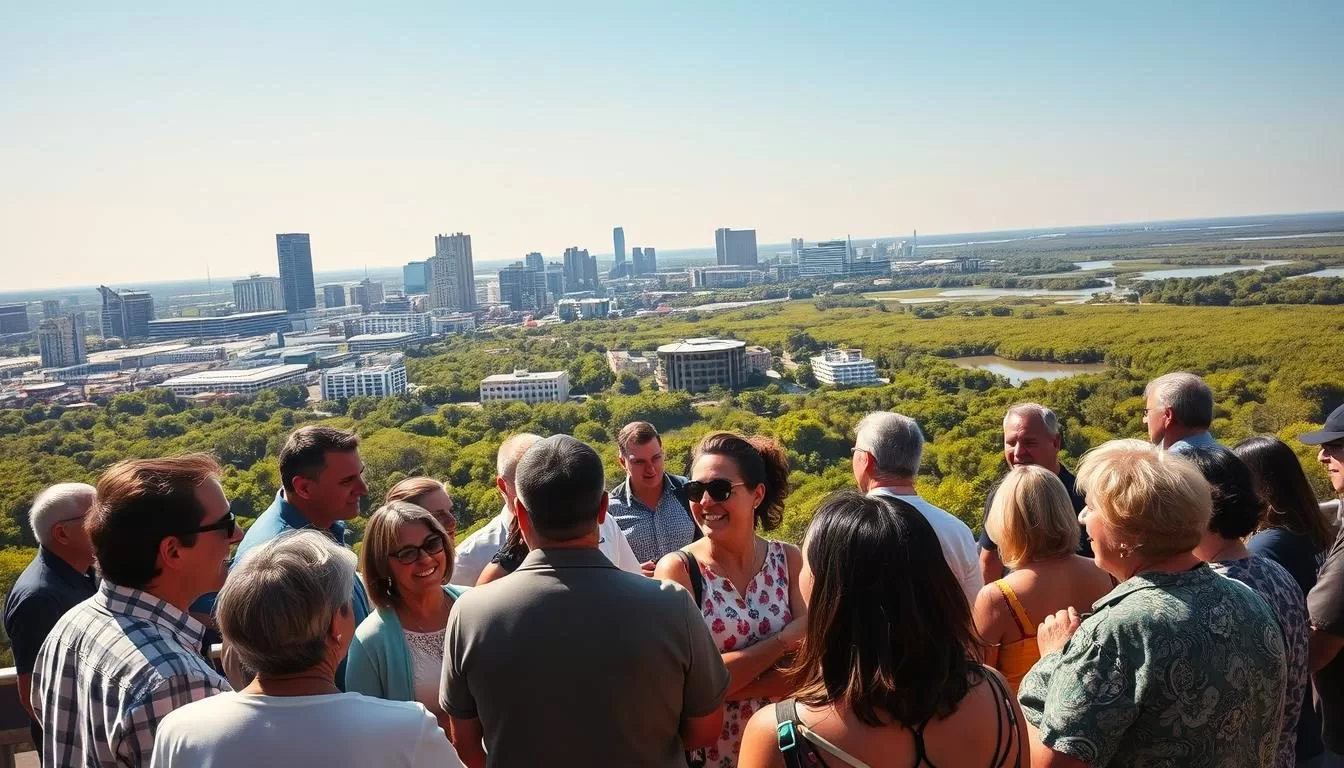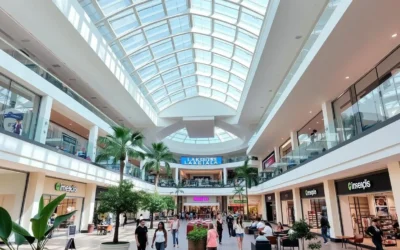✓ Accommodations ✓ Flights ✓ Rental Cars
When visiting Louisiana, you’ll discover a fascinating linguistic landscape that reflects the state’s rich cultural heritage and diverse population. As you explore the region, you’ll encounter English as the predominant language, but the state’s unique history has created a linguistic tapestry unlike any other in the United States.
The state is incredibly diverse, with many people immigrating to Louisiana over the centuries, bringing their languages and cultures with them. As a result, far more languages are spoken in the state than one may expect. Understanding the language situation in the region will enhance your travel experience and help you connect more deeply with locals during your visit.
The Linguistic Landscape of Louisiana
As you explore the linguistic landscape of Louisiana, you’ll discover a complex tapestry of languages and dialects. The state’s unique cultural heritage has shaped the way people communicate, resulting in a diverse linguistic landscape.
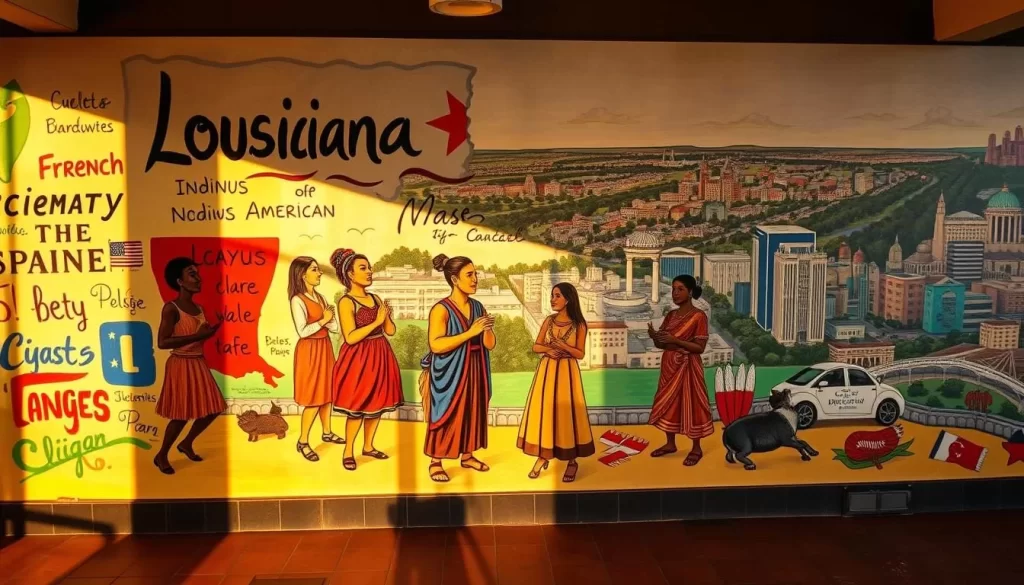
English as the Predominant Language
English is the predominant language in Louisiana, used by the vast majority of the state’s 4.6 million residents as their primary means of communication. You’ll find that approximately 92.3% of the population speaks English as their primary language, making it the most widely spoken language in the state.
The data from cms.gov, an official government website, indicates that while the vast majority speak English, an estimated 7.7% of persons above the age of four use another language at home.
Louisiana’s Unique Language Diversity
Louisiana’s language diversity is shaped by its unique historical development and cultural influences. The state’s linguistic landscape stands out in the United States due to the strong influence of French culture and language. You’ll discover that language diversity varies significantly by region, with certain areas maintaining stronger connections to their linguistic heritage than others.
The state’s population demographics show that approximately 2.81% of Louisiana residents have limited English proficiency, highlighting the need for language services and resources.
Historical Background of Languages in Louisiana
You can gain a deeper understanding of Louisiana’s language landscape by exploring its historical context. The state’s linguistic diversity is a result of its complex history, shaped by various cultures and languages.
Indigenous Languages Before European Settlement
Before European settlers arrived, Louisiana was inhabited by diverse indigenous groups, including the Atakapa, Caddo, Chitimacha, Natchez, and Tunica peoples. These communities spoke a variety of languages, contributing to the state’s rich linguistic heritage. The presence of these indigenous languages laid the foundation for the linguistic diversity seen in Louisiana today.
French and Spanish Colonial Influence
The arrival of European colonizers, primarily from France and Spain, significantly impacted Louisiana’s linguistic landscape. French became the dominant European language during the early 1700s, establishing a lasting influence on the state. The Spanish colonial period, from 1762 to 1800, added another layer to the linguistic mix, although its impact was less pervasive than that of French. The interaction between European colonizers and indigenous peoples, as well as African slaves, further enriched the state’s linguistic diversity.
Immigration Patterns and Their Linguistic Impact
Over time, Louisiana’s population has been shaped by various immigration patterns. The arrival of Acadians, later known as Cajuns, strengthened French language use in southern Louisiana. Additionally, immigrants from Hungary, Germany, Croatia, Africa, Latin America, Cuba, and Asia brought their languages and dialects, contributing to the state’s linguistic mosaic. As a result, Louisiana’s language situation is characterized by a unique blend of cultures and languages.
| Language Group | Influence | Time Period |
|---|---|---|
| Indigenous Languages | Original linguistic diversity | Pre-European Settlement |
| French | Dominant European language | Early 1700s |
| Spanish | Additional linguistic layer | 1762-1800 |
| Immigrant Languages | Diverse linguistic influences | Ongoing |
Official and Widely Spoken Languages in Louisiana
As you explore Louisiana, you’ll discover a multilingual environment shaped by its history. The state’s linguistic diversity is reflected in its official and widely spoken languages.
English: The De Facto Official Language
While Louisiana doesn’t have an official language by law, English functions as the de facto official language, used in government, education, and business throughout the state. Approximately 92.3% of the population speaks English as their primary language, making it the predominant language in Louisiana.
French and Louisiana French (Cajun)
French, particularly Louisiana French (Cajun), holds a special cultural and historical significance in the state. With approximately 76,909 speakers, it makes up a little more than 1.76% of the population. The Council for the Development of French in Louisiana (CODOFIL) works to preserve and promote French language use.
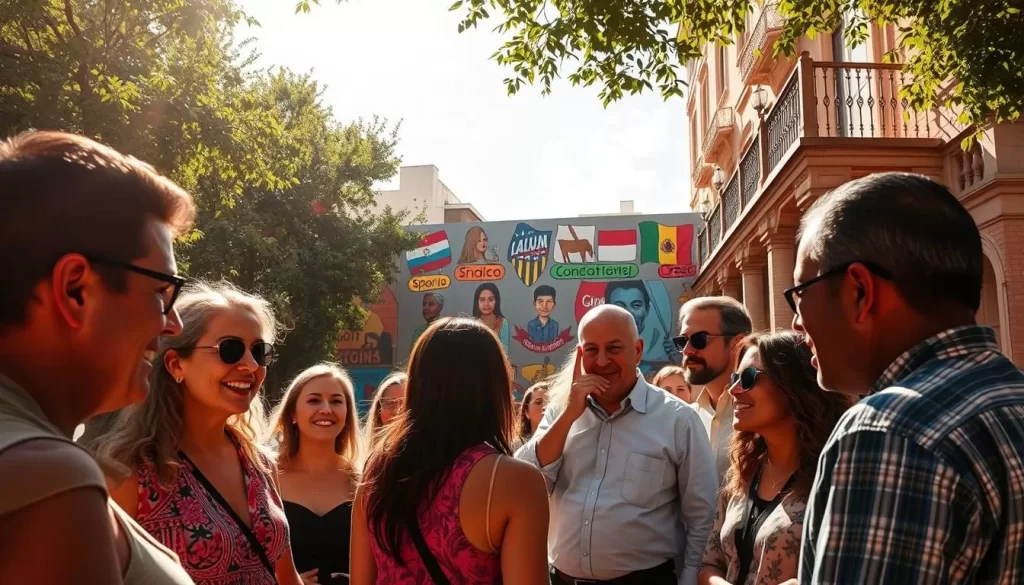
Spanish: The Fastest Growing Language
Spanish is the fastest-growing and most widely spoken non-English language in Louisiana, with approximately 161,117 speakers, resulting in a population share of nearly 3.7%. This growth reflects the state’s changing demographics and cultural landscape.
Other Significant Languages
In addition to English, French, and Spanish, other languages are also significant in Louisiana. For instance, Vietnamese is spoken by approximately 24,960 people, or about 0.57% of the population, particularly in communities around New Orleans and along the Gulf Coast.
| Language | Number of Speakers | Percentage of Population |
|---|---|---|
| English | 92.3% of population | 92.3% |
| Spanish | 161,117 | 3.7% |
| French (including Cajun) | 76,909 | 1.76% |
| Vietnamese | 24,960 | 0.57% |
Louisiana’s linguistic landscape is dynamic, with language access services increasingly available in healthcare settings and government agencies to accommodate limited English proficiency residents and visitors. This reflects the state’s commitment to inclusivity and accessibility.
Top 10 Non-English Languages in Louisiana
As you explore the linguistic diversity of Louisiana, you’ll discover the top non-English languages spoken in the state. Louisiana has a population of approximately 4.6 million residents, with a significant number speaking languages other than English at home.
An estimated 7.7% of persons above the age of four, about 353,449 people, use another language at home. Additionally, around 2.81% of the population, approximately 128,986 people, are considered to have limited English proficiency (LEP).
Spanish
Spanish is the most widely spoken non-English language in Louisiana, with approximately 161,117 speakers, making up nearly 3.7% of the population. You’ll find Spanish speakers particularly concentrated in urban areas and among newer immigrant communities.
French (Including Cajun)
The second most common non-English language is French (including Cajun), with an estimated 76,909 speakers, making up a little more than 1.76% of the population. French is an important cultural heritage marker, especially in southern Louisiana.
Vietnamese
Vietnamese ranks third among non-English languages, with about 24,960 speakers, making up about 0.57% of the population. These speakers are largely concentrated in communities that formed following immigration waves after the Vietnam War.
Chinese (Including Mandarin and Cantonese)
Chinese, including Mandarin and Cantonese, is the fifth most common non-English language, with approximately 10,233 speakers, making up about 0.24% of the population. You’ll often find Chinese speakers in urban centers.
Arabic
Arabic is spoken by about 10,789 Louisiana residents, making up nearly 0.25% of the population. This reflects the diverse Middle Eastern and North African communities in the state.
Tagalog
Tagalog, including Filipino, is in sixth place on the list, with an estimated 5,872 speakers, making up a little more than 0.13% of the population.
German
There are about 4,641 German speakers residing in Louisiana, making up nearly 0.11% of the population.
Haitian
Haitian is the eighth most common non-English language, with approximately 4,168 speakers, resulting in a population share of a bit less than 0.1%.
Portuguese
Portuguese speakers make up around 0.07% of the population, with an estimated 3,134 speakers in the state.
Thai, Lao, and Other Tai-Kadai Languages
Thai, Lao, and other Tai-Kadai languages round out the top ten, with approximately 2,672 speakers, giving them a population share of a bit more than 0.06%.
The following table summarizes the top 10 non-English languages in Louisiana:
| Language | Number of Speakers | Percentage of Population |
|---|---|---|
| Spanish | 161,117 | 3.7% |
| French (Including Cajun) | 76,909 | 1.76% |
| Vietnamese | 24,960 | 0.57% |
| Arabic | 10,789 | 0.25% |
| Chinese (Including Mandarin and Cantonese) | 10,233 | 0.24% |
| Tagalog | 5,872 | 0.13% |
| German | 4,641 | 0.11% |
| Haitian | 4,168 | 0.1% |
| Portuguese | 3,134 | 0.07% |
| Thai, Lao, and Other Tai-Kadai Languages | 2,672 | 0.06% |
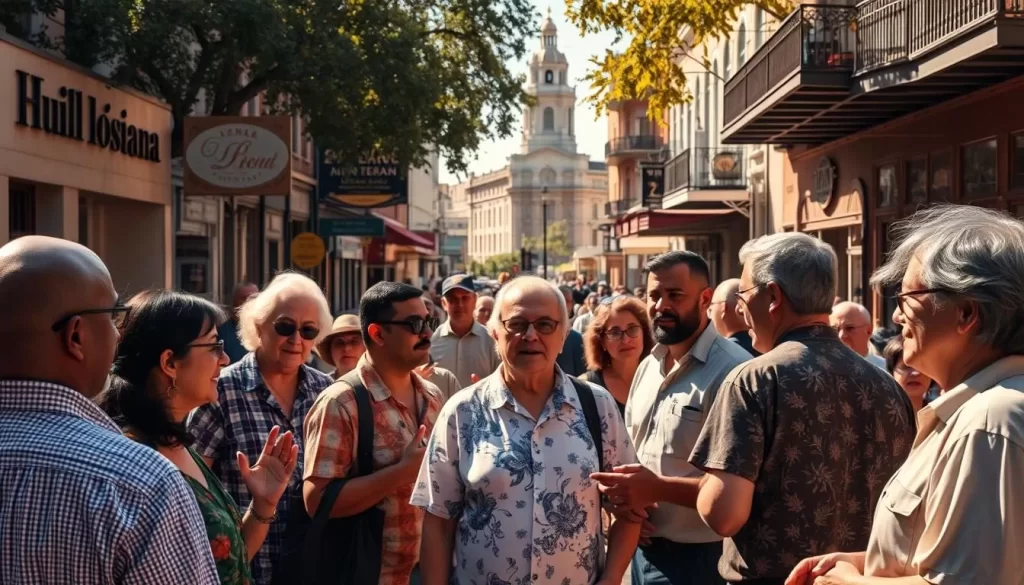
Language Services and Resources for Visitors
The state’s commitment to inclusivity is evident in the various language services available to visitors. Louisiana’s diverse population speaks a wide variety of languages, making it essential for organizations to have access to skilled translators and interpreters.
Translation and Interpretation Services
You can find numerous translation and interpretation services throughout Louisiana, designed to bridge communication gaps. Companies like Acutrans provide certified document translations in 24 hours or less, as well as interpretation services in over 200 languages, using various approaches such as video remote, over-the-phone, and on-site interpretation.
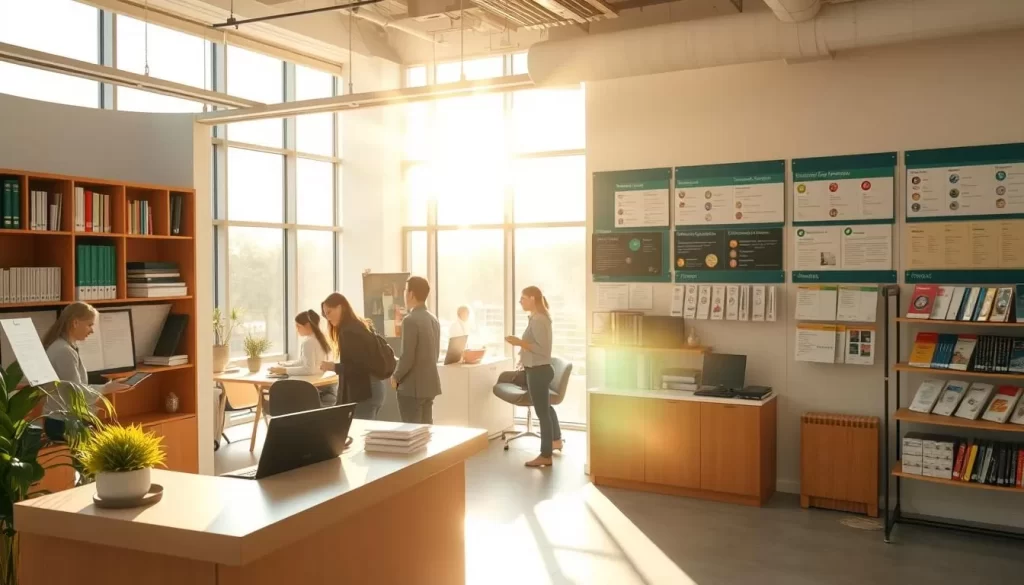
Language Access in Healthcare and Public Services
When accessing healthcare in Louisiana, you should know that facilities receiving federal funding are required to provide language access services for patients with limited English proficiency. Hospitals and emergency services typically have access to interpretation services covering the top languages spoken in their region, ensuring that you receive the care you need.
Conclusion
Your Louisiana journey is enriched by linguistic diversity. With translation services, you navigate, enhance your experience, and appreciate the complex history, culture, and heritage, making your visit memorable, special, enriching, unique, and truly unforgettable today always in Louisiana fully.
The above is subject to change.
Check back often to TRAVEL.COM for the latest travel tips and deals.
